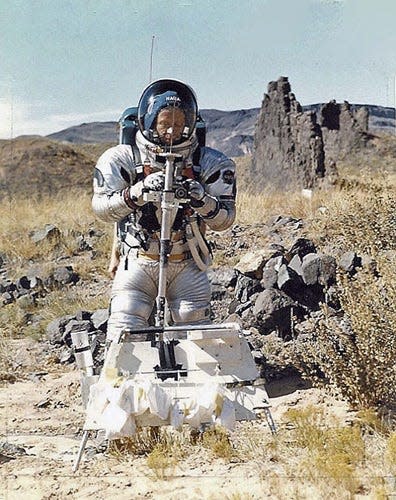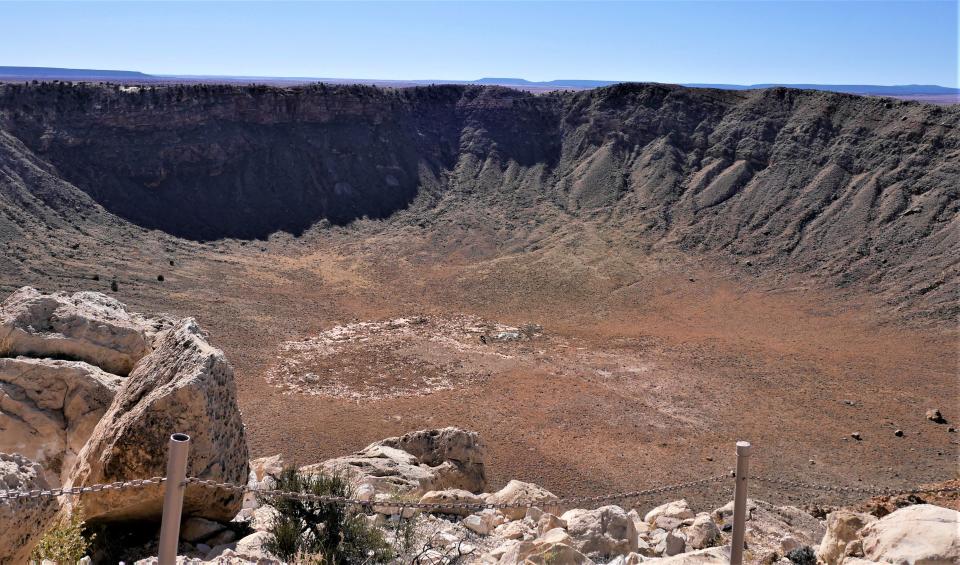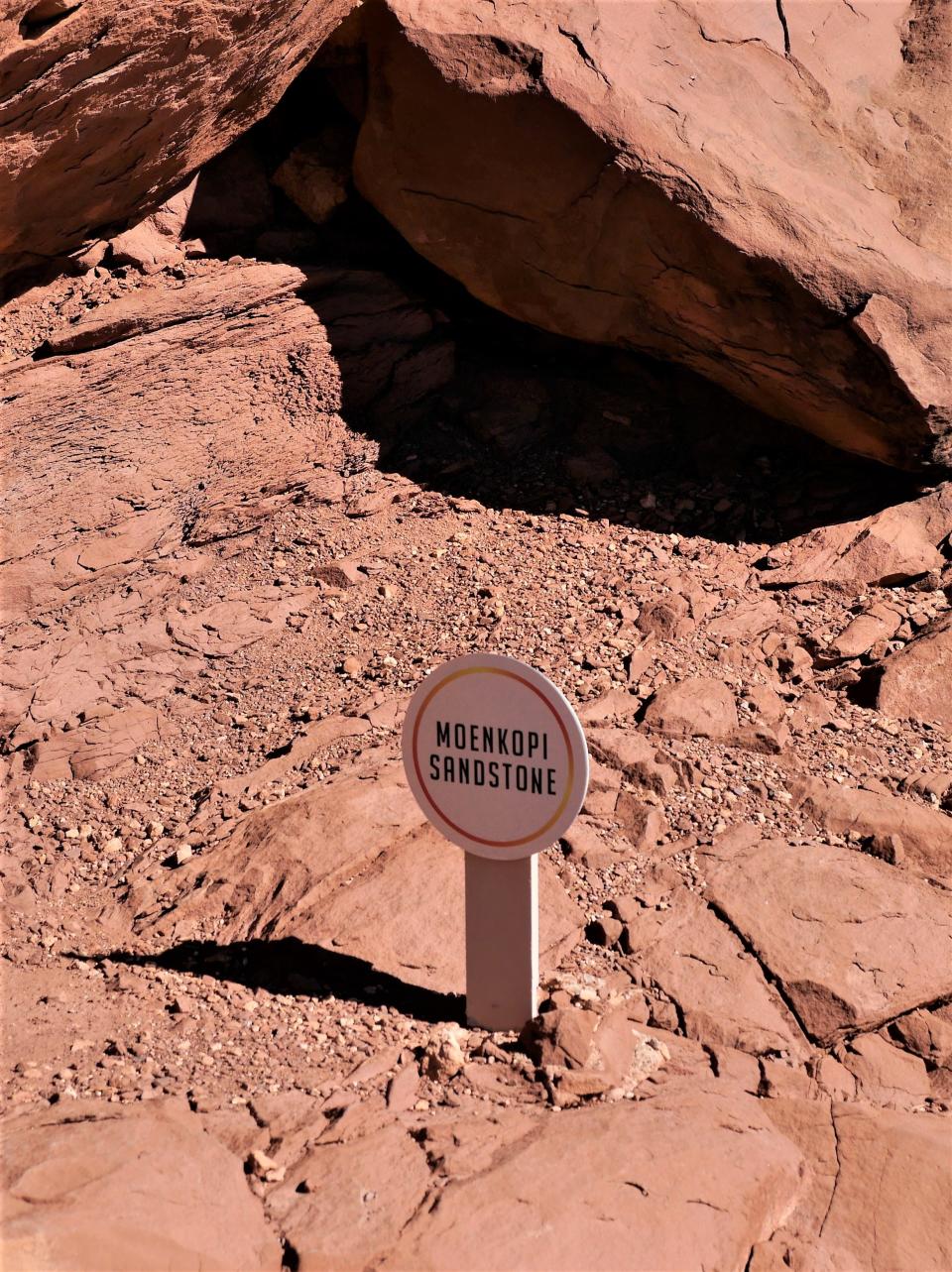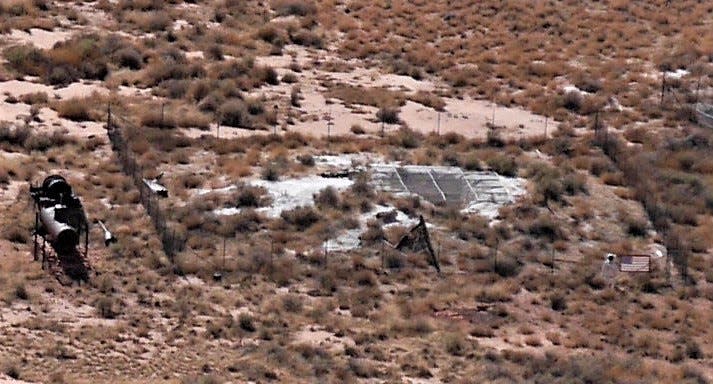Beyer's Byways: Destination Meteor Crater in Arizona a stunning geological wonder
It was a warm afternoon approximately 50,000 years ago in a desolate landscape in what would be later known as Northern Arizona when something monumental occurred.
A giant ground sloth looked up into the heavens and was startled to see a bright rapidly moving object streaking through the blue skies. Even though he did not have a college degree in astrophysics, the sloth knew something was amiss.

As all sloths do, he slowly turned and looked at his friend, Roger Mammoth.
“Roger, look up in the sky and tell me what you think of that thing. Is it getting closer to us?”
After munching about a ton of vegetation, Roger raised his head and looked.
“Uh oh, that can’t be good,” Roger uttered.
“That’s what I thought,” replied the sloth.
During the Pleistocene epoch, which is translated as being a long time ago, these friends met their doom. A giant nickel-iron meteorite traveling around 29,000 miles per hour and half the size of a football field crashed into the Earth — thus ruining the sloth’s and mammoth’s future.
People who study this event believe the meteorite struck the Earth with the same damaging power of about 10 megatons of TNT. Research showed that one megaton is equivalent to 4.18 x 10 to the 15 joules.
I have no idea what that is supposed to mean. But when all was said and done with the meteorite slamming into the Earth’s surface, there was a hole nearly 4,000 feet wide and 560 feet deep.
That would have been something to witness from a very long distance away.
“We should visit the Meteor Crater some time,” I suggested to Laureen one afternoon.
She nodded. “We have, about 15 years ago.”
“That’s a long time. We should visit again,” I replied. “Things could have changed since then.”
“Translation: you don’t really recall the trip we took with the girls there, do you?”
She had me there. “I think you were wearing blue jeans and a light gray blouse.” I tried.
So an adventure was called for, and off we visited a place that I didn’t remember visiting.
Stops along the way
Originally, the meteorite crash site was known as Canyon Diablo Meteorite since it was located just a few short miles from the nearby Canyon Diablo. The name was later changed to the Barringer Crater in honor of Daniel M. Barringer, the first person to hypothesize the crater in the ground resulted from a meteorite impact.
The drive to Meteor Crater is lovely. Either by Interstate 40 or by my favorite, Route 66. Plenty to see and experience. Great small towns slowly drifted by as miles were made.
Meteor Crater may have been our destination, but there were many places to take a pit stop that we could not help ourselves. Well, we could have stopped ourselves but what would be the fun in that?
More from Beyer's Byways: General Patton Memorial Museum a must-see destination
The city of Flagstaff was one place we decided to stop and grab a bit of lunch. Sheltered in the shadows of the San Francisco Peaks Mountain Range, the city is bustling but with a laid-back atmosphere. With nearly 74,000 residents, it has a lot to offer both locals and visitors.
We wandered through old downtown Flagstaff, grabbed a bite at the Weatherford Hotel, and were back on the road toward Meteor Crater.
“We should spend some time in Flagstaff,” I said. “It looks like a place to explore.”
Laureen shook her head. “We did when the girls were young. You don’t remember that either, do you?”
“Of course, I do. You were wearing blue jeans and a light grey blouse, if memory serves me correctly,” I replied.

A geological wonder
Meteor Crater is one of the best-preserved craters on Earth, due in part to the dry climate where it is located. This high desert receives very little annual precipitation even at over 5,000 feet above sea level. It is also one of the youngest impact craters, only 50,000 years old.
But some researchers believe the bottom of the crater is 100 feet higher than when the meteor struck. Sediment has blown in over the rim through those thousands of years and filled the bottom with dirt and sand. The rim is also about 60 feet shorter due to the constant erosion from the winds blowing across the flatlands surrounding the crater.
Another Arizona stop: Wonders of Grand Canyon Caverns worth exploring
The crater was known by both Native Americans and pioneers who crossed the northern sections of Arizona heading further west. Most believed the significant depression in the ground had been caused by volcanic activity, as there are so many such sites in the southwest. But in 1903, businessman and mining engineer Daniel M Barringer came up with the concept that the impact of a meteorite had caused the crater.
He was ridiculed by scientists, who believed it was the remains of an ancient volcano.

“Oh, what a silly little man,” one scientist said to another.
“Quite, quite,” replied the other scientist, who may have been British due to his usage of the term quite.
It turned out Barringer was correct with his assumption, and the doubting scientists ended up sounding rather a codswallop.
Barringer happened to own a mining company, the Standard Iron Company, and was able to obtain a 640-acre mining patent starting in the center of the crater. One square mile of land was a big piece of property to begin a mining expedition.
In his mind, Barringer thought there might be a huge meteorite buried at the bottom of the crater. In his estimation, the meteorite must have weighed about 100 million tons. The iron ore found at and around the impact site was valued at $125 a ton at the time. That would mean the Standard Iron Company was looking at a potential billion-dollar bonanza.
That would be a tremendous amount of cash in 1903. It would be about a gazillion dollars today.
Over $500,000 was sunk in the venture over 27 years with nothing to show. There was no bulking meteorite waiting to be found and turn Barringer into the richest man ever to walk the Earth.
Proving Barringer correct

In 1929, astronomer F.R. Moulton wrote a paper detailing that when the meteorite struck the Earth, it would have only weighed around 300,000 tons and evaporated upon impact due to the intense heat caused by this big rock hurtling in from outer space at such a velocity.
Barringer died just 10 days after the report was published.
“Sounds like he died of a broken heart,” Laureen stated.
Today, the crater and surrounding area is still owned by the Barringer family in the name of the Barringer Crater Company.
High Desert's own crater: Amboy Crater, a sight to behold — and explore
Since it is privately owned, it is not considered a national monument, but in the 1960s, the crater was used by NASA. Astronauts would venture to the bottom of the crater, don their space suits, and bounce around as if they were walking around on the surface of the moon.
The facility is large and has something for everyone interested in history, geology, astronomy, and anything else that deals with space. There are exterior displays of an Apollo 11 space capsule, alien dummies, astronaut dummies, and many other things to take photographs next to.
The crater rim walkway is well paved and guided by knowledgeable docents. But there is also the opportunity for the visitor to walk around on their own and view the incredible view of the crater from many different angles.

One angle allows a view of what appears to be an astronaut standing at the bottom of the crater, which binoculars or a good camera can only see with a telephoto lens due to the distance from the top of the rim to the bottom of the crater.
Inside the visitor center is a theater detailing the story of the crater and Barringer. This 4D experience is an interactive ride for all ages, a 1,400-pound meteorite, a discovery center, as well, as a large space museum.
A simulated biometric panel also appears to scan your palm to see if you have the correct "classified" status to venture further into the museum.
Laureen passed with flying colors. Me, I was escorted from Meteor Crater immediately by some buff security personnel.
“No space museum for you,” one of the guards yelled as he threw me out of the building.
I made that up. Laureen caused a diversion, and I ran around the guards to see all I could see about this thing called space and the objects floating here and there, ready to crash into the earth at any moment.
It was rather exciting. So was the entire experience at Meteor Crater and the Barringer Space Museum.
For further information: meteorcrater.com
This article originally appeared on Victorville Daily Press: Beyer's Byways: Destination Meteor Crater a geological wonder

